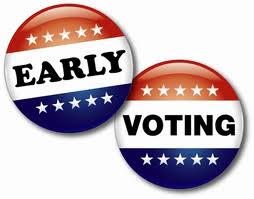Because we like starting with tweets:
.
Welp.https://projects.fivethirtyeight.com/polls/president-general/texas/
— Nate Silver (@NateSilver538) 5:58 PM – 25 October 2020
That was from Sunday, after the UT-Tyler poll was factored in. As you may know, there have been two polls released since then, both favorable to Trump, so the above may be a fleeting snapshot in time. Enjoy it anyway.
The two polls I mentioned have their issues, and I will be covering them both, one today and one tomorrow. There have been a lot of polls of Texas, some better than others and some more publicized than others. It’s hard to keep up with them.
President Donald Trump frequently derides “phony polls” after he proved them wrong by defeating Hillary Clinton in 2016. But in Texas, some public polls had the opposite problem: They overestimated Trump’s margin of victory by 3 percentage points.
Two years later, polls in Texas yet again underestimated Democrats, including Beto O’Rourke, who came within 3 percentage points of unseating U.S. Sen. Ted Cruz after public polling showed him down by as many as 9 percentage points that October.
As Texas appears to be acting more like a swing state than it has in decades, O’Rourke and other Democrats have turned the idea that polling underestimates them into a sort of rallying cry as they seek to convince voters that Texas is actually in play for former Vice President Joe Biden, or that former Air Force pilot MJ Hegar could unseat longtime Republican Sen. John Cornyn.
“Pollsters have a very hard time locating, tracking and counting the votes of likely Democratic voters,” O’Rourke said recently. “Even with the polling this tight, I think actually the advantage is to Biden.”
I’ll leave it to you to read the rest. I don’t know that the polls will necessarily underestimate Biden, as they did underestimate Beto – the final polling averages in 2016 were fairly accurate, as I have noted before. There is a lot of uncertainty this year – big turnout, super big early turnout, many newly registered voters – and the polls have varied wildly in things like Latino support for Trump, which has led to some big differences in overall numbers. Early turnout is very heavily female, and women poll much more strongly for Biden. Models factor a lot of stuff in, but they all have to make some assumptions.
The Day Fourteen daily EV totals are here. You can find the daily totals for 2008 and 2012 (and 2016 as well, but I’ve got a separate link for it) here, for 2016 here, and for 2018 here. I’m just going to keep on keeping on with the pretense that early voting actually began last Monday, except with 628K votes already in the bank. The first table is totals for the “normal” early voting time period for each year.
Election Mail Early Total
=======================================
2008 46,085 376,761 422,846
2012 57,031 429,186 486,217
2016 85,120 555,383 640,503
2018 78,190 494,712 572,902
2020 156,157 439,488 595,645
One way you can see the shift to earlier voting for people is to compare Week One and Week Two for each of these pre-2020 years. In 2008 and 2012, Week Two early voting was generally higher each day than in Week One. That was not true in 2016 and 2018, where the daily levels were for the most part about the same or maybe a bit less in the second week. In those years, Week One had started at a higher level, so there was less room to grow, and in the end a lot more people wound up voting in the EV period. We saw crazy high daily totals in Week One this year, lower but still pretty good Week Two levels, and now we’re in the uncharted waters of Week Three. The only thing I expect to be the same is for the final day to be the busiest.
Day One of Week Three was slower than any of the five weekdays from Week Two, though the in person total was close to last Thursday’s. It was above the mark for Saturday and Sunday, and has us back ahead of the pace to equal or bypass 2016 total turnout during the EV period.
Vote type Mon Tue Wed Thu Fri Week
============================================================
Mail 6,407 6,407
Drive-thru 5,448 5,448
In person 46,747 46,747
Total 58,602 58,602
Vote type Week 1 Week 2 Week 3 Total
===================================================
Mail 75,504 74,246 6,407 156,157
Drive-thru 54,105 39,264 5,448 98,817
In person 499,099 348,227 46,747 894,073
Total 628,708 461,737 58,602 1,149,047
For the next three days, there will be extended early voting hours, to 10 PM each day. I’m not going to be awake when the County Clerk sends out the daily totals, so for the rest of the week expect the updated figures to lag by a day. I’m very interested to see what effect the extended hours have – do the daily totals tick up in proportion to the extra three hours, or does the load just get spread out a bit more evenly? Same thing for the 24-hour voting, which will be happening at eight locations. How many people wander into an EV location at 2 AM? I can’t wait to find out. Note that even if the overnight tallies are low, they’re still worth doing, as this is about making it easier and more convenient to vote. One of those 24-hour EV locations is in the Medical Center, and you know there are plenty of people milling about there at all hours. I look forward to seeing this become the standard for future elections.
We are now about 40K away from surpassing 2008 total turnout, 55K from 2012 total turnout, and 70K from 2018. With a day like Monday, the first two are in range today. We need to average 47,463 over the next four days to surpass 2016. My next update will be tomorrow. Have you voted yet?

